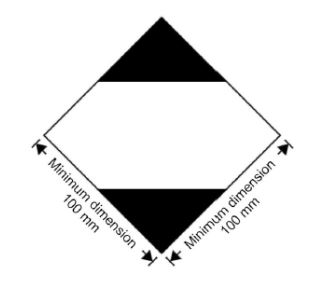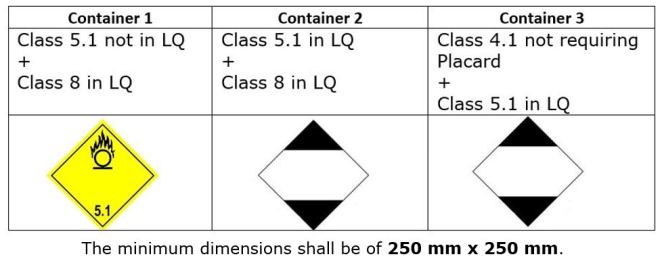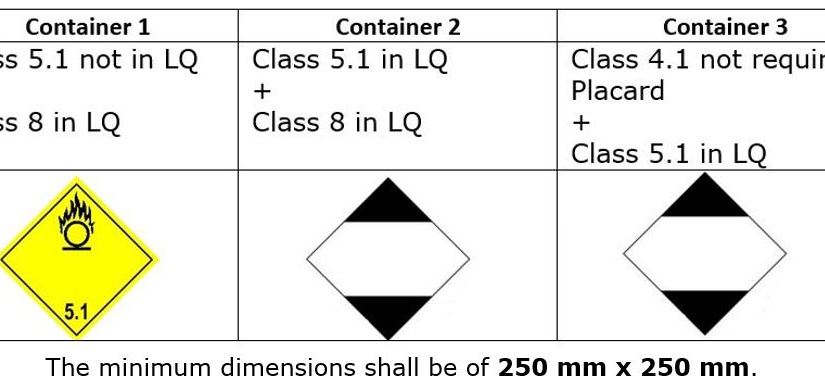‘Good things come in small packages’. The provisions of Limited Quantities was introduced in IMDG Code in the 90’s. The lesser quantity Dangerous Goods packed in good, robust packaging pose lesser risks during transport than the same goods packed in larger volumes. On the basis of this, lesser risk, shippers are given some exemptions from certain other provisions of IMDG Code when shipping Dangerous Goods in Limited Quantities.
Any entry in IMDG Code Dangerous Goods List which has ‘0’ in column 7a is not permitted to be transported in accordance with the provisions of Limited Quantities, Chapter 3.4. All other entries can be shipped in Limited Quantities provided the Dangerous Goods are packed in combination packing with inner packagings containing Dangerous Goods not more than the quantity mentioned in column 7a and gross mass of package is not more than 30 kg and for shrink-wrapped or stretch-wrapped trays not more than 20 kg.
Example Limited Quantity inner packagings and outer packagings limit.

Use of intermediate packaging is an option for Dangerous Goods in Limited Quantities but it is mandatory to use intermediate packaging for Liquid goods of Class 8, packing group II in glass, porcelain or stoneware inner packagings. Inner packagings is not required for articles such as aerosols or receptacles, small, containing gas.
The packaging for shipments in Limited Quantities need not have to pass the UN performance tests, example: drop test, stack test etc., however they shall meet the provisions of 4.1.1.1, 4.1.1.2 and 4.1.1.4 to 4.1.1.8 and construction requirements of 6.1.4, 6.2.1.2, 6.2.4 of IMDG Code as applicable.
Segregation provisions of IMDG Code is not applicable between Dangerous Goods packed in Limited Quantities and other Dangerous Goods. However if different Dangerous Goods are packed in same outer packaging as Limited Quantities then such consolidation must meet the criteria below
- The substances do not react dangerously with each other and cause:
- combustion and/or evolution of considerable heat;
- evolution of flammable, toxic or asphyxiant gases;
- the formation of corrosive substances; or
- the formation of unstable substances.
2. The segregation provisions of chapter 7.2, including the segregation provisions in column 16b of the Dangerous Goods List, are taken into account. However substances in packing group III within the same class may be packed together provided they comply with point no.1 above.
3. Dangerous Goods Declaration shall include the following statement: ‘‘Transport in accordance with 3.4.4.1.2 of the IMDG Code’’
The Marking for Packages containing Limited Quantities shall be readily visible, legible and able to withstand open weather exposure without a substantial reduction in effectiveness. The marking shall be in the form of a square set at an angle of 45° (diamond-shaped). The top and bottom portions and the surrounding line shall be black. The centre area shall be white or a suitable contrasting background.

The minimum dimensions shall be 100 mm x 100 mm and the minimum width of the line forming the diamond shall be 2 mm. Where dimensions are not specified, all features shall be in approximate proportion to those shown. If the size of the package so requires, the minimum outer dimensions shown above may be reduced to be not less than 50 mm x 50 mm provided the marking remains clearly visible. The minimum width of the line forming the diamond may be reduced to a minimum of 1 mm.
Containers with Dangerous Goods and Dangerous Goods packed in Limited Quantities shall be placarded and marked according to the provisions applicable to the Dangerous Goods which are not packed in Limited Quantities. However, if no placard or mark is required for the Dangerous Goods not packed in Limited Quantities, the container shall be marked with Limited Quantities mark on each side and on each end of the container.
Example Container Marking for Dangerous Goods in Limited Quantities

The Limited Quantity marking on the container shall be readily visible, legible and it must still be identifiable surviving at least three months’ immersion in the sea.
The requirement for containers carrying Marine Pollutants in Limited Quantities to display Marine Pollutant Mark on all four sides is removed from 37th amendment of IMDG Code.
Together with the description of the shipment words ‘‘limited quantity’’ or ‘‘LTD QTY’’ must be included in the Dangerous Goods Declaration.
Shipments of Dangerous Goods in Limited Quantities by Ocean shall meet the requirements of below sections of IMDG Code.
- Part 1, Chapters 1.1, 1.2 and 1.3;
- Part 2;
- Part 3, Chapters 3.1, 3.2, 3.3, and 3.4;
- Part 4, 4.1.1.1, 4.1.1.2 and 4.1.1.4 to 4.1.1.8;
- Part 5, 5.1.1 except 5.1.1.4, 5.1.2.3, 5.2.1.7, 5.2.1.9, 5.3.2.4, and
- Chapter 5.4;
- Part 6, construction requirements of 6.1.4, 6.2.1.2 and 6.2.4;
- Part 7, 7.1.3.2, 7.6.3.1 and 7.3 except 7.3.3.15 and 7.3.4.1.
This article is in accordance with IMDG Code 37-14. Most lines will switch over to 37th amendment of IMDG Code at least by 1st November 2015 to ensure Dangerous Goods carried in accordance with IMDG Code 36-12 is discharged at final seaport before 1st January 2016.



